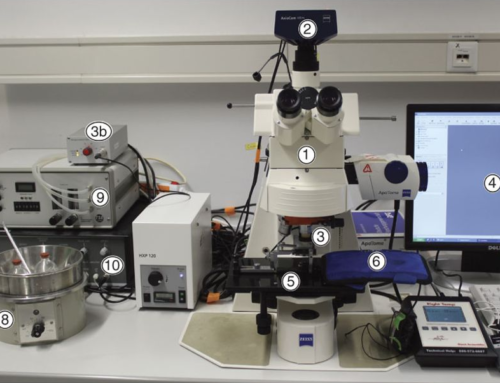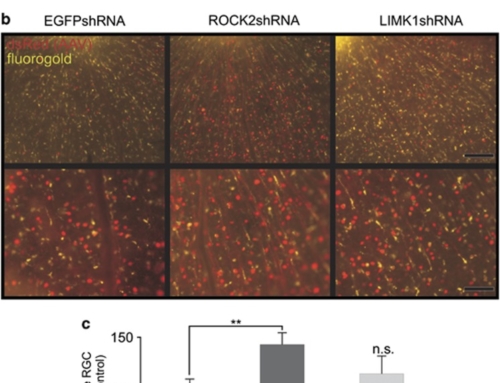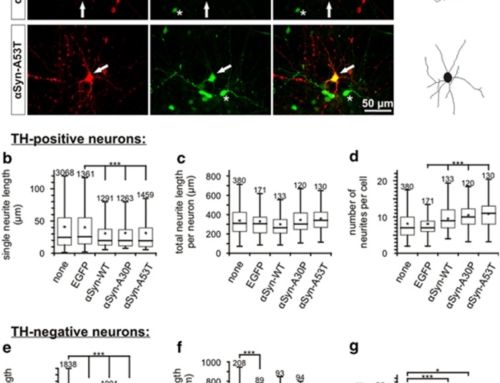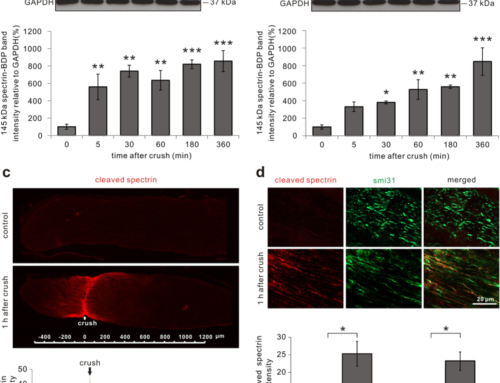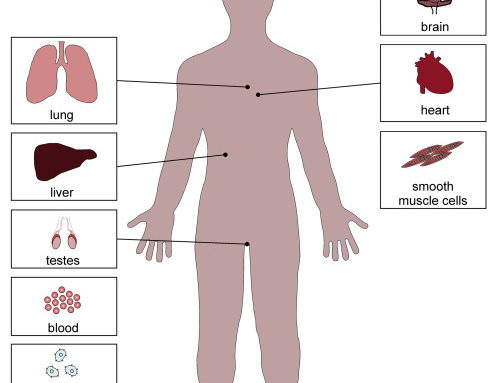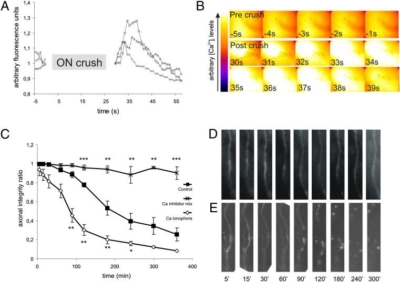
Axonal degeneration is an initial key step in traumatic and neurodegenerative CNS disorders. We established a unique in vivo epifluorescence imaging paradigm to characterize very early events in axonal degeneration in the rat optic nerve. Single retinal ganglion cell axons were visualized by AAV-mediated expression of dsRed and this allowed the quantification of postlesional acute axonal degeneration (AAD). EM analysis revealed severe structural alterations of the cytoskeleton, cytoplasmatic vacuolization, and the appearance of autophagosomes within the first hours after lesion. Inhibition of autophagy resulted in an attenuation of acute axonal degeneration. Furthermore, a rapid increase of intraaxonal calcium levels following crush lesion could be visualized using a calcium-sensitive dye. Application of calcium channel inhibitors prevented crush-induced calcium increase and markedly attenuated axonal degeneration, whereas application of a calcium ionophore aggravated the degenerative phenotype. We finally demonstrate that increased postlesional autophagy is calcium dependent and thus mechanistically link autophagy and intraaxonal calcium levels. Both processes are proposed to be major targets for the manipulation of axonal degeneration in future therapeutic settings.
Mechanisms of acute axonal degeneration in the optic nerve in vivo.
Knöferle J, Koch JC, Ostendorf T, Michel U, Planchamp V, Vutova P, Tönges L, Stadelmann C, Brück W, Bähr M, Lingor P.
Proc Natl Acad Sci U S A. 2010 Mar 30;107(13):6064-9. doi: 10.1073/pnas.0909794107. Epub 2010 Mar 15.
[PubMed]
